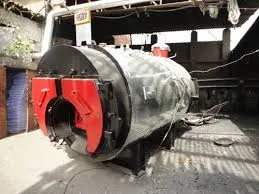
ធ្នូ . 11, 2024 04:16 Back to list
Steam Boiler Safety Inspection Guide for Optimal Performance and Risk Management
Steam Boiler Safety Checklist Ensuring Optimal Operation and Safety
Steam boilers are essential in various industrial applications, providing heat and energy for processes ranging from power generation to food processing. However, they also pose significant risks if not properly maintained and operated. Therefore, implementing a comprehensive steam boiler safety checklist is crucial in ensuring the equipment operates efficiently and safely. This article outlines the key elements of a steam boiler safety checklist, highlighting the importance of regular inspections and maintenance.
1. Regular Inspections and Maintenance
The foundation of a safe and efficient steam boiler operation is routine inspections. These should be conducted at regular intervals—weekly, monthly, and annually—depending on the manufacturer’s guidelines and local regulations. It is advisable to keep a detailed log of all inspections, maintenance, repairs, and any operational issues. During these inspections, focus on key components such as
- Water Level Controls Ensure that the water level is within the specified range. Low water levels can lead to overheating and potential boiler failure. - Pressure Relief Valves Check pressure relief valves for proper operation. These valves are essential for releasing excess pressure, preventing boiler explosions. - Boiler Tubes Inspect boiler tubes for signs of wear and tear. Corroded or faulty tubes can lead to steam leaks or total boiler breakdown.
2. Testing Safety Devices
Safety devices are installed to mitigate the risks associated with steam boiler operations. It's critical to test these safety features regularly
- Pressure Gauges Ensure that pressure gauges are functional and accurately display the internal pressure of the boiler. - Low Water Cutoff Devices Test low water cutoff devices to ensure they activate properly when the water level is too low. - High-Pressure Cutoff Switches Verify the functionality of high-pressure cutoff switches to prevent over-pressurization, which can lead to catastrophic failures.
3. Checking Feedwater Quality
The quality of feedwater used in steam boilers directly affects their operation and longevity. Poor-quality feedwater can lead to scale buildup, corrosion, and operational inefficiencies. To ensure feedwater quality
- Test for Hardness and pH Levels Regularly test feedwater for hardness and pH levels to prevent scaling and corrosion. - Treatment Chemicals Monitor and maintain appropriate levels of treatment chemicals to neutralize harmful substances in the water.
steam boiler safety checklist

4. Fuel Supply System Safety
The fuel supply system is another critical area of concern. Regularly inspect and maintain the fuel supply lines and burners to ensure safe operation
- Leak Checks Conduct regular checks for leaks in the fuel supply lines. A leak can pose fire hazards and lead to an inefficient operation of the boiler. - Burner Performance Inspect burners for proper functioning. Inefficient burning can lead to excess emissions and energy waste.
5. Operator Training and Emergency Protocols
The operators play a significant role in maintaining steam boiler safety. To ensure safe operations
- Training Programs Regularly provide training to operators on the safe operation of steam boilers, including emergency response procedures. - Emergency Protocols Develop and review emergency protocols to handle potential incidents such as boiler explosions, fires, or chemical leaks.
6. Documentation and Compliance
Maintaining clear documentation and ensuring compliance with local regulations is vital for steam boiler safety
- Regulatory Compliance Ensure that your boiler operation complies with local, state, and federal regulations. Regularly review these regulations as they may change or evolve. - Record Keeping Maintain thorough records of maintenance, inspections, training, and any incidents. This documentation is not only useful for audits but also essential for continuous improvement.
Conclusion
Implementing a steam boiler safety checklist is not just a regulatory requirement but a best practice that can significantly enhance workplace safety and operational efficiency. Regular inspections, proper training, and compliance with safety standards are essential components of a successful steam boiler management strategy. By committing to rigorous safety protocols, businesses can protect their employees, equipment, and investments while ensuring the reliable and efficient operation of their steam boilers. Remember, safety in boiler operation is an ongoing commitment that requires diligence and proactive management.
-
Oil Fired Hot Water Boilers Sale - High Efficiency & Affordable
NewsJul.31,2025
-
High-Efficiency Commercial Oil Fired Steam Boiler for Industry
NewsJul.30,2025
-
High-Efficiency Biomass Fired Thermal Oil Boiler Solutions
NewsJul.30,2025
-
High Efficiency Gas Fired Thermal Oil Boiler for Industrial Heating
NewsJul.29,2025
-
High-Efficiency Gas Fired Hot Water Boiler for Sale – Reliable & Affordable
NewsJul.29,2025
-
High Efficiency Biomass Fired Hot Water Boiler for Industrial and Commercial Use
NewsJul.29,2025
Related PRODUCTS






















